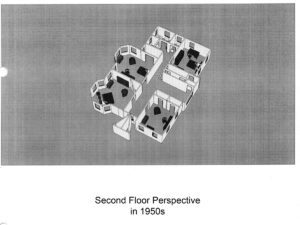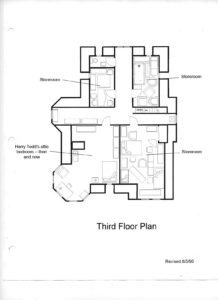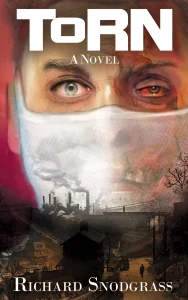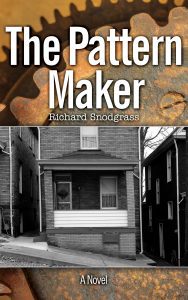The return of Harry Todd Sutcliff after 20 years to the Western Pennsylvania mill town of Furnass rekindles the competition with his younger brother Dickie who took over the family’s prosperous real estate firm after the death of their father. Dickie Sutcliff finds himself dealing with a possible take-over of the business by his brother, as well as the problems of developing the former site of Buchanan Steel into an industrial park, the feeble financial maneuvering of an old friend, and setting up housekeeping with a younger woman. Both brothers are dealing with the ghost of a beloved sister, and with their aged mother, Kitty, a local eccentric and keeper of the family’s secrets. Secrets that can heal or destroy.
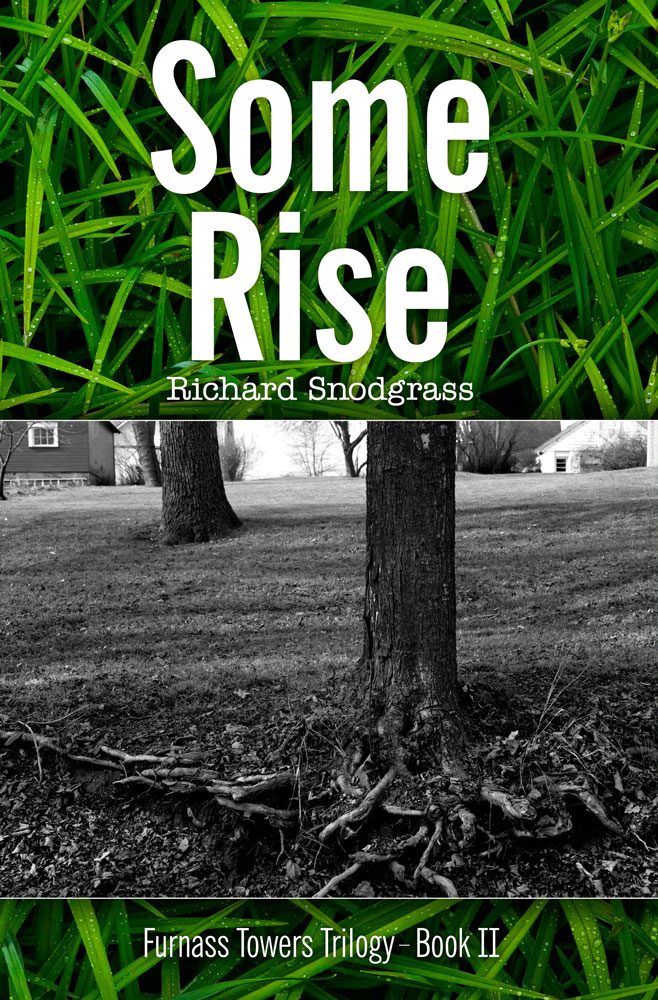
Videos
About Book Two
Praise for Some Rise
“Snodgrass’ gift for characterization, plotting, and dialogue make SOME RISE one of the most engaging family sagas/literary mysteries we’ve read in years.”
— Indie Reader “Approved”
“A sequel that improves on its predecessor…SOME RISE is an impressive work of fiction that is shaping up to be a great literary series.”
— Self-Publishing Review
For full reviews of SOME RISE, see “Reviews, Extras, Etc.” on this page, or click here.
Reader’s Guide to SOME RISE
Summary
Told from the perspectives of multiple members of the Sutcliff family, Some Rise covers territory mapped out by perhaps the most urgent and confusing of all human experiences: love. When Harry Todd Sutcliff returns home to the small town of Furnass, Pennsylvania, after a twenty-five-year absence, penniless and out of options, he quickly stirs up talk about the death of his sister, Kathleen, which occurred years earlier. Harry Todd had always assumed she succumbed to the severe asthma that plagued her for the duration of her life, but he quickly realizes that much darker forces were at play. During Harry Todd’s quest for the truth, several family secrets are unearthed, and the remaining members of the Sutcliff family—especially Harry Todd’s youngest sibling, Dickie, and their aging mother, Kitty—are forced to confront painful memories. Set in the 1980s against the deterioration of the steel industry, the novel takes several unexpected turns as the Sutcliffs recognize the inescapable bonds that keep them tied to one another. In Some Rise Snodgrass has woven a poignant and enthralling tale of small-town dynamics, familial strife, and the unconscious undercurrents present in human relationships.
Questions and Topics for Discussion
- This novel is told from the point of view of several characters, each, at times, with varying recollections of past events. As you read, which character did you trust the most? Did these views change as the book progressed?
- In what ways do you think the setting—a town in the midst of economic decline—contributes to the Sutcliff family dynamic? How does the setting reflect the family’s position within the town of Furnass? And how do the Sutcliffs respond to the setting—do they do what they can to counter it, or do they accept it?
- Some Rise is reminiscent of John Irving’s The Hotel New Hampshire in the sense that it concerns complicated and taboo familial relationships. How do Irving and Snodgrass differ in their approaches to this topic?
- Discuss the ways in which the author maintains Kathleen’s place at the center of the novel, despite never writing a passage from her point of view.
- Why does Harry Todd keep thinking he sees a woman in his mother’s house? Why do no other characters seem to experience this?
- At one point, Doctor tells Kitty, “People think love is pretty, but it isn’t. It’s usually ugly on some level, because it means one person wants another person’s mind or soul or body for his or her own purposes. Love is one person trying to devour another in some way.” Do you think this is inherently true within the context of Some Rise? In your own experiences?
- Some Rise offers several glimpses into Kitty’s past. How do you think her experiences as a young woman influenced her role as a mother? In what ways can both her shortcomings and achievements as a parent be attributed to what we know of her back story?
- Toward the end of the novel, Kitty remarks, “I spent all those years trying to protect her father from Kathleen, and the one time that counted most I didn’t do it,” to which Dickie responds, “Don’t you mean protect Kathleen from her father?” Discuss, in your opinion, which character(s) in Some Rise needed to be saved or protected, and from whom. Did they get the protection they deserved?
- Dickie has had a very linear career path in business and real estate, while Harry Todd has worked a series of odd jobs in various industries. How do their occupations offer insight into the development of their characters and the ways in which they interact with the people around them?
- Compare the ways in which Harry Todd and Dickie have understood and dealt with Kathleen’s death. In what ways have these discrepancies contributed to the strained relationship between the two brothers?
Reviews, Extra Scenes, etc.
Notes in Progress
The following are notes made during a rewrite of Some Rise in 1997, one of a number of rewrites of the book as the Furnass Series developed over the years. At this time the book was entitled The Wind and the Rain, taken from the song by that name in Shakespeare’s Twelfth Night, as well as a traditional folk song, “O, The Wind and The Rain,” sung by Jerry Garcia and David Grisham. At the time, both songs seem to reflect what I thought were the major concerns of the novel.
You’ll also notice that a number of the characters’ names were different at that time: Dickie was known as Clay; Harry Todd was Quinton or Quinton Todd; Harry Sutcliff, Harry Todd’s father and Kitty’s husband, was Quint; Julian Lyle was Sylvan Bates. The names changed because the characters took on different personalities as I got to know them better; over the revisions they let me know their actual names, not the abstract concepts I originally had of them—so there!
In this manifestation of the story, Quinton Todd (Harry Todd) is an unsuccessful San Francisco figurative painter, in the style of Nathan Olivera and Richard Diebenkorn, rather than an unsuccessful business man. His time with painters of that school, with whom he came in contact while at Berkeley through his relationship with the free-spirited Laurel, certainly had an effect on him and his viewpoint of the world. But despite what sensibilities he might have, artistic or otherwise, I recognized later that Harry Todd is still his father’s son and a businessman at heart—like his younger brother except more conflicted, his sensibilities only serving to confuse him, a guy always at war with himself.
In some ways, the novel changed considerably over the years and many drafts; in other ways, the book stayed doggedly the same. These entries are comments to myself about what I’d discovered about the characters or events during the actual writing; connections between characters and events I only realized upon reflection after the writing; and sketches for possible further developments. As such they may shed some light on how the author develops his material, and how the material can shape the author.
PreNotes Excerpt
Writing for me, among other things, is a way to learn what I didn’t know that I know. I may have some idea what I think a book is about when I start it, but it eventually lets me know what I’m really talking about. And that’s certainly a good thing: as Frost says, “No surprise for the writer, no surprise for the reader.” The way I get to that point of awakening is to sketch, sketch, sketch, sometimes sitting at the computer, sometimes with a pen and yellow sheets of paper. From there I hopefully have learned something about the story and characters from the rush of ideas when I return to the actual writing.
In the process of getting the first book of the Furnass Series, The Building, into a reasonable shape, I realized there was more to the story of putting up a high-rise building in this struggling mill town than I first thought and that it called for a second book. At the time I wrote the following Pre-Notes and Sketches, I had already taken a flying leap at a couple drafts of the book that would become Some Rise. Now it was time to step back, take what I had learned of the characters and story thus far, and figure out the best way to proceed before attempting the next draft.
In looking back over these notes, it is interesting to me to realize how much I didn’t like most of the characters at this stage of the book’s development. (Please see the note for the previous selection, regarding the development of the character’s names. In these Pre-Notes, Quinton Todd, later Harry Todd, is just Quinton; and, Dickie is Dickie, not Clay. Interesting that he started out as Dickie, then became Clay as I wanted him to be more grounded, then went back to Dickie as his character grew, when he didn’t need a name to signify who or what he was.) Liking the characters wasn’t a problem in The Building because of my appreciation for the people I worked with in construction. But when it came to the second volume of the Trilogy, and the workings that set the building in motion, I initially wasn’t so understanding of who I was writing about and their motivations.
I came upon that realization when I considered a criticism I was leveling at other contemporary writers. It had occurred to me that one of the reasons I disliked so much contemporary fiction was that the writers didn’t seem to like their own characters. One rarely saw the compassion for characters that one finds in Dickens or Dostoevsky or Faulkner. Rather, the writers’ stance was kind of a one-upmanship: I know what you’re doing and I don’t like it. Added to that was my own perversion of the Joycean idea of the epiphany. In the classic sense, the epiphany occurs at the end of the story when the character realizes the fruitlessness of all his/her actions that we’ve seen earlier. Added to that, I fell into a Freudian trap, based on bad tendencies bred of psychotherapy, of wanting to reveal the flaws of a particular character and how it explained everything they had done in the novel. I not only know what you did, I’m going to show the reader how misguided you were. Not a friendly way to be at all. That changed when I’d just shut up and let the characters tell me their story.
In these pre-notes, you’ll notice this dislike—or perhaps disapproval is the better word— of the characters from the first entry. Thus far Quinton is still a painter and a former hippie; not that I have anything against the Dead, but I tend to dislike the hippie-dippie variety of Deadhead—I wasn’t fond of my drugged-out brothern in the day, not fond of them now. And Dickie is said to take his role model from Donald Trump—of the early days of the TV show The Apprentice, but even so. Thank heaven Dickie himself set me straight in later drafts, to the point that whereas Quinton was originally the central character, Dickie became his equal in my eyes, if not surpassing him. It didn’t help that at this stage Quinton was apparently thinking—or afraid he was thinking—of killing his mother. Poor confused Quinton had so much to learn.
These pre-notes and sketches go on for another hundred pages or so, but this excerpt, up to the point where I got back to the actual writing, should be enough to give you an idea of what was going on in the author’s head….
Summer Rain – New Notes 2016
Just as the names of the characters changed as the story evolved, so did the name of the book itself. As noted elsewhere, the title started out as The Wind and the Rain. Then for a short time it was Summer Rain, in deference to the weather pattern that happens toward the end of the book—and whatever symbolic meaning it might or might not have. There was also a seasonal reference that occurred to me: the books of the trilogy take place in progressive seasons of the year (though not in the same year), the first book at that time being known among other things as Sun Without Heat. But after the title of the final book of the trilogy became clear, All Fall Down, it followed (as night to day) that the second book was Some Rise, a reference to the characters themselves, that some have risen in the world and some have not, and the theme of how the characters live and deal with that. Of course, the first book, with its introductory nature, needed to be titled for exactly what it was: The Building.
Julian Lyle, for reasons lost to the stars, is known here by a childhood name, Cricket, as well as Nib, short for his (then) Christian name, Niblock. It wasn’t until he told me that his name was Julian that his character became his own person. Quinton Todd has become Harry Todd—a name much more in keeping with his steel town roots—an indication that he is coming into his own as a character. He is no longer painter, an artist coming back home—a similarity to the author that was not only forced but restricting as to who the character actually is. His father is Harry, not Quint as previous, coming into his own early on. There’s also speculation in all these early drafts of a time that Dickie spent in California after he graduated from Penn State, and an affair he had there with his older brother’s wife/lover Laurel. That was part of the early concept of Dickie—my concept of Dickie—I was glad to discover never happened.
The Art of the Deal
In the mid-1990s during one of the many rewrites of the novel I realized I was in over my head when it came to possible real estate deals and financial manipulations. Accordingly, I reached out to several of my friends who knew something about such things—who will here remain nameless to protect the innocent in case I got things screwed up in my understanding of what they told me. The following notes were made after these consultations to summarize what I had learned and how it would fit my purposes. Please excuse any grammatical errors—I want to maintain the pell-mell pace in which these sketches were made….
The Art of the Deal
Dickie would go to the corporation that took over the assets of Buchanan and say, Look, this is going to be a long torturous process to market this project, you’re trying to close out your books and you’re in a business that you know nothing about, you’re just going to drain your resources. Here’s my deal: why don’t we form a limited partnership, with me as the general partner and you as the limited partner. If the project becomes profitable, I will guarantee you a return of 2 points above (I’m not sure what), say 15%. Meanwhile I assume the control of the project.
To swing this deal, he goes to the banker — in this case, he takes him to lunch at the Riverside Inn where they can look across at the project. Sylvan told Dickie during his visit that the Tower is about to be sold on the courthouse steps — auctioned off. And no one is expecting much of an auction on a defunct project like this in a failing mill town. He would tell the banker that he is interested in the taking over the control of River’s Edge [later, Furnass Landing], and what he has proposed to Buchanan. Banker would say that’s very interesting, how do you propose to finance it. Dickie says let me run a scenario by you. I know the Tower is going to be sold at auction. Suppose I buy it, and then some friendly person reappraises it, let’s say at a higher value, I could then use it as collateral to get a loan to purchase River’s Edge, under the limited partnership agreement with Buchanan. The banker says very interesting, but how do you propose to get the money to purchase the Tower? And Dickie says, well, I guess I’d have to borrow it. And the banker says, and what could you put up as collateral for a project, even as shaky, as the Tower, I can’t imagine, knowing you, that you’d want to risk any of your prime other holdings in such a deal. And Dickie says no, you’re right, I wouldn’t want to run the risk like Sylvan of putting up my best holdings, mortgaging my house or anything, that’s the difference between an amatuer and a pro, I guess I’d just hope that somebody who heard about the deal came up with some inventive financing. And the banker says you’re going to make me say it, aren’t you. And Dickie says, you know it’s always good business to accept a proposal rather than to make one. And the banker says, well I suppose a bank such as ours could be interested in crosscollateralizing the loans. And Dickie says, hey, there’s an idea. And the banker says don’t get me wrong, I’m not doing it for any sense of friendliness, if you default I can end up with two pieces of property at even less than you paid for them, and Dickie says see I knew you were a clever man, but don’t get your hopes up, I’ve never defaulted on a property yet that I wanted.
The key concept there being that of cross-collateralization of the loans. Also, that once he picks up the tower at auction, he gets the bank or someone else to reappraise it for him at a higher price than which he paid, and so can use that for collateral for the other project. And he would wait for the banker to suggest the cross-collateralization, because a smart businessman always does better to respond than to suggest.
Songs That Kitty Sings — Or Whistles, as the Case Maybe
Oh, Dear! What Can the Matter Be?
Traditional
Oh, dear! What can the matter be?
Dear, dear! What can the matter be?
Oh dear! What can the matter be?
Johnny’s so long at the fair.
He promised to buy me a trinket to please me
And then for a kiss, oh! He vowed he would tease me,
He promised he’d bring me a bunch of blue ribbons
To tie up my bonnie brown hair.
Oh, dear! What can the matter be?
Dear, dear! What can the matter be?
Oh dear! What can the matter be?
Johnny’s so long at the fair.
He promised he’d bring me a basket of posies,
A garland of lilies, a garland of roses,
A little straw hat, to set off the blue ribbons
That tie up my bonnie brown hair.
Oh, dear! What can the matter be?
Dear, dear! What can the matter be?
Oh dear! What can the matter be?
Johnny’s so long at the fair.
Beautiful Dreamer
Stephen Foster
Beautiful dreamer, wake unto me,
Starlight and dewdrops are waiting for thee;
Sounds of the rude world, heard in the day,
Lull’d by the moonlight have all passed away!
Beautiful dreamer, queen of my song,
List while I woo thee with soft melody;
Gone are the cares of life’s busy throng,
Beautiful dreamer, awake unto me!
Beautiful dreamer, awake unto me!
Beautiful dreamer, out on the sea,
Mermaids are chanting the wild lorelei;
Over the streamlet vapors are borne,
Waiting to fade at the bright coming morn.
Beautiful dreamer, beam on my heart,
Even as the morn on the streamlet and sea;
Then will all clouds of sorrow depart,
Beautiful dreamer, awake unto me!
Beautiful dreamer, awake unto me!
The Big House with the Tower on the Hill
In the early stages of the novel, I used some architectural rendering software to create a few schematics of my conception of the Sutcliff House, both inside and out, to help me visualize what was going on where. As I got deeper into the story, however, the house occasionally stood up on its own—as characters are wont to do—and determined for itself the location of certain areas within its walls despite my well-laid plans. May every writer be so lucky.
Background of the S&L Crisis and Economy of the 1980s
The following are some of the materials I used in writing Some Rise as background to the financial climate of the 1980s in general, and the Savings & Loan Crisis in particular.
The Savings & Loan Crisis and other economic problems of the early 1980s were a direct result of the political and economic policies of the 1970s. But rather than learn from these earlier mistakes, as soon as the economy halfway stabilized after its initial hits, new political and economic policies continued the old with renewed vigor, leading to the excesses of the 1990s and the near total collapse of the economy at the beginning of the 21st Century. Worst of all, perhaps, those policies fostered the growing disparities between the social classes—the rich grew richer as the poor grew poorer—leading to evermore social unrest and inequality as the new century progressed. Where it eventually will lead is yet to be determined.

